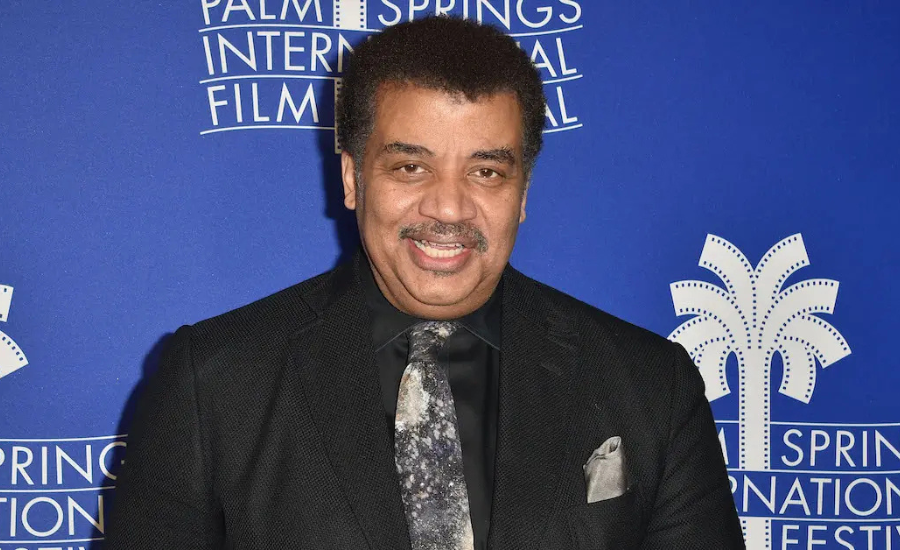
Neil deGrasse Tyson, born on October 5, 1958, in New York City, is a renowned astrophysicist and a leading voice in science communication. Throughout his career, Tyson has established himself as a key figure in making complex scientific concepts approachable and engaging for the general public. With his extensive background in astrophysics, he has not only contributed significantly to our understanding of the universe but has also played a pivotal role in bridging the gap between academia and popular culture.
What sets Neil deGrasse Tyson apart is his remarkable ability to communicate intricate topics like space exploration, black holes, and the Big Bang theory in ways that resonate with audiences of all ages. His charismatic presence and clear, relatable explanations have made him one of the most recognizable faces in science media. Through his appearances on television programs, podcasts, and social media, Tyson has made a lasting impact on how people engage with science, inspiring countless individuals to explore the wonders of the cosmos.
Beyond his role as an educator and communicator, Neil deGrasse Tyson’s contributions to astrophysics have helped shape the scientific landscape. As the director of the Hayden Planetarium at the American Museum of Natural History, he has overseen the development of groundbreaking exhibits and educational programs that introduce visitors to the wonders of space. Tyson’s work continues to inspire curiosity and foster a deeper appreciation for science, particularly in the field of astrophysics, where his influence remains unparalleled.
Who Is Neil deGrasse Tyson?
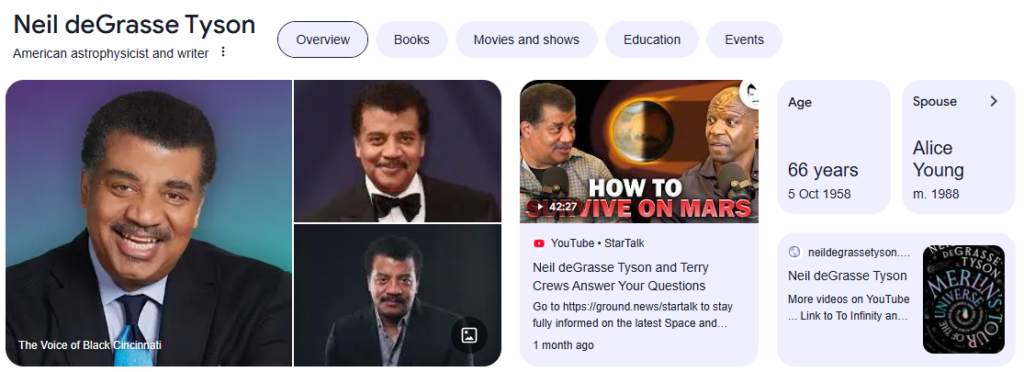
Neil deGrasse Tyson, born on October 5, 1958, in Manhattan, New York City, has established himself as one of the most influential astrophysicists and science communicators of our time. With his captivating personality and ability to simplify complex scientific concepts, Tyson has become a global ambassador for astrophysics. His ability to engage audiences, combined with a lifelong passion for the cosmos, has allowed him to bridge the gap between academia and popular culture. As a result, Neil deGrasse Tyson has made science both fascinating and accessible, inspiring millions to explore the universe and think critically about the world around them.
From a young age, Neil deGrasse Tyson demonstrated an insatiable curiosity about the stars and the vastness of space. Growing up in New York City, he frequently visited the Hayden Planetarium, which sparked his lifelong love of astronomy. By his teenage years, Tyson’s knowledge of the subject had already surpassed that of many of his peers, earning him respect from professionals in the field. His deep passion for space led him to pursue higher education, first earning a Bachelor’s degree in Physics from Harvard University and then obtaining a Ph.D. in Astrophysics from Columbia University. These formative years provided the foundation for his future work as a leading voice in science.
Tyson’s career took a major leap in 1996 when he became the director of the Hayden Planetarium at the American Museum of Natural History. In this role, he reshaped the institution, overseeing the construction of the Rose Center for Earth and Space, which transformed the way the public interacted with astronomy. This hands-on approach to science education allowed Tyson to expand his reach beyond academic circles, making science accessible to people from all walks of life.
Neil deGrasse Tyson Early Life And Educational Background
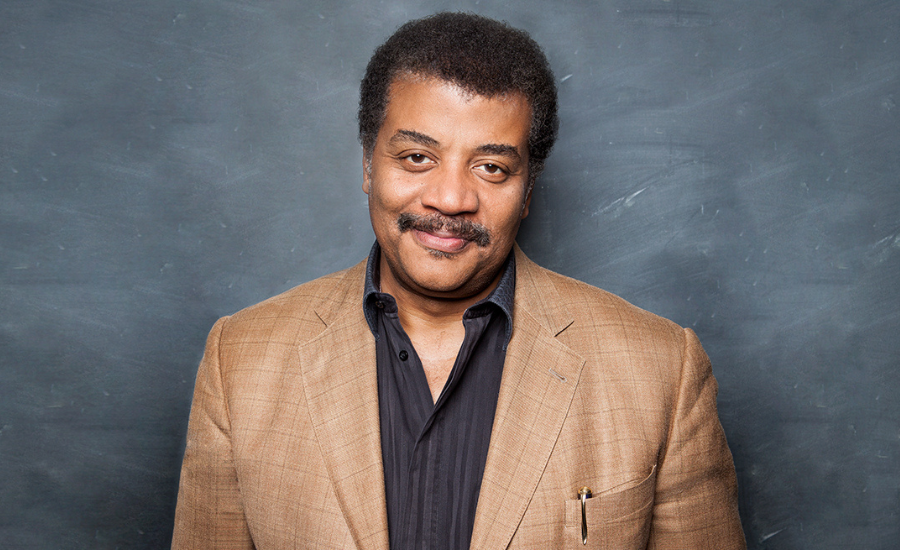
From a young age, Neil deGrasse Tyson showed a profound interest in the stars and the mysteries of the universe. Growing up in the bustling environment of New York City, he often found solace and inspiration in the Hayden Planetarium. These early visits to the planetarium ignited a spark that would fuel his lifelong passion for astronomy. His natural curiosity about the cosmos only deepened as he spent more time exploring the wonders of the universe, and by the time he reached his teenage years, Neil deGrasse Tyson had already become quite knowledgeable about the subject, impressing those around him with his insights.
Tyson’s academic journey was just as remarkable. His enthusiasm for science led him to Harvard University, where he pursued a degree in physics. During his time at Harvard, his intellectual curiosity and determination to delve deeper into the cosmos propelled him forward. After earning his bachelor’s degree, Tyson continued his studies at Columbia University, where he earned a Ph.D. in astrophysics. His time at Columbia further shaped his expertise in the field, and it was during these years that he began to establish himself as a rising star in the world of astrophysics.
Even as a student, Neil deGrasse Tyson’s thirst for knowledge and his ability to grasp complex scientific concepts quickly earned him respect within academic and professional circles. His early recognition in the field paved the way for his future success, setting the stage for his groundbreaking career in both astrophysics and science communication. Tyson’s educational background provided the solid foundation needed to build his influential career, which would later lead to him becoming one of the most influential science communicators of his generation.
Becoming Director Of The Hayden Planetarium
In 1996, Neil deGrasse Tyson reached a major career milestone when he was appointed the director of the Hayden Planetarium at the American Museum of Natural History. This opportunity marked a turning point not only in Tyson’s professional life but also in the history of the museum itself. Under his leadership, the planetarium was revitalized and transformed into a modern, state-of-the-art institution that would fundamentally alter how the public engaged with astronomy. Tyson’s vision for the planetarium was one that embraced both scientific exploration and public education, ensuring that visitors of all ages could gain a deeper understanding of the universe.
A key part of Neil deGrasse Tyson’s impact on the planetarium was his oversight of the construction of the Rose Center for Earth and Space. This new facility redefined the visitor experience by integrating cutting-edge technology with immersive, hands-on exhibits. Tyson’s goal was to spark curiosity and inspire a sense of wonder about the cosmos, and through this new space, he succeeded in reaching a wide audience, from children to adults, fostering a deeper connection to the science of the universe.
Through his work at the Hayden Planetarium, Neil deGrasse Tyson solidified his role as a leading force in science communication. His commitment to blending education with awe-inspiring visuals created an environment where science could be both intellectually enriching and emotionally engaging. Tyson’s innovative approach to public outreach ensured that visitors not only learned about the stars and planets but also left with a renewed sense of wonder and curiosity. His influence in shaping the planetarium’s future has left a lasting legacy, and it continues to inspire countless people to explore and understand the mysteries of the universe.
Astrophysics And The Cosmos
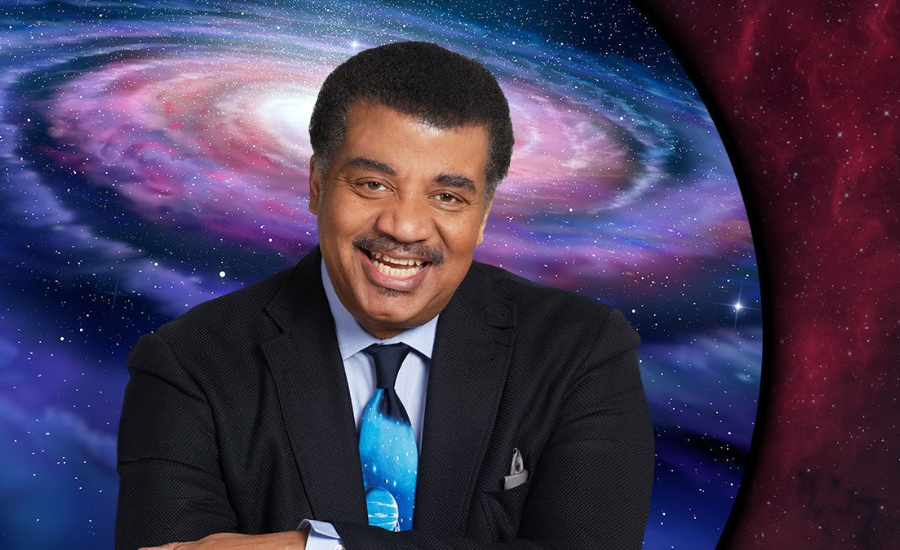
His work has significantly expanded our understanding of space, particularly in areas related to star formation, galaxy dynamics, and the broader structure of the cosmos. Tyson’s passion for space exploration and his ability to make complex scientific concepts accessible have propelled him to the forefront of both academic research and public science communication. His contributions to astrophysics have helped pave the way for a more detailed understanding of the universe, from its origins to the ongoing processes shaping its evolution.
Throughout his career, Neil deGrasse Tyson has worked on numerous groundbreaking scientific projects that have advanced our knowledge of fundamental cosmic phenomena. His research has focused on understanding the origins of stars and galaxies, shedding light on the processes that drive their formation and evolution. Additionally, Tyson has made significant contributions to the study of dark matter and dark energy, two of the most mysterious and elusive aspects of the universe. His work in these areas has provided valuable insights into the fundamental forces that govern the cosmos, further deepening our understanding of how the universe operates on both large and small scales.
Beyond his contributions to scientific research, Neil deGrasse Tyson has also been a passionate advocate for space exploration. He has actively campaigned for greater investment in space missions, emphasizing the importance of exploring the unknown to expand our knowledge of life beyond Earth. His advocacy for space exploration has inspired both young and adult audiences to embrace the importance of scientific discovery. Through his research, public appearances, and educational initiatives, Tyson continues to be a leading voice in advancing our collective understanding of the universe and promoting the ongoing exploration of space.
Science Communication And Public Engagement
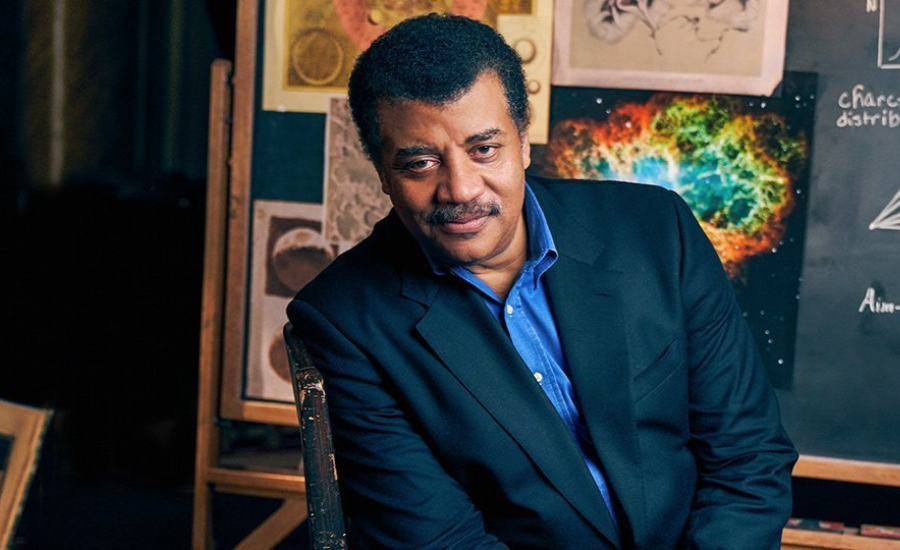
While Tyson’s academic and research accomplishments are extensive, it is his work in science communication that has earned him widespread recognition. He is a passionate advocate for promoting scientific literacy and inspiring the next generation of scientists.
Tyson’s role as the host of the hit television series Cosmos: A Spacetime Odyssey is perhaps his most notable contribution to science communication. In 2014, the show aired as a modern continuation of Carl Sagan’s classic Cosmos series. It earned widespread acclaim for its ability to make complex topics like the Big Bang, black holes, and evolution not only understandable but also captivating for a broad audience. Tyson’s charismatic and accessible presentation style helped bridge the gap between scientists and the public, making him a beloved figure among science enthusiasts and casual viewers alike.
In addition to Cosmos, Tyson has hosted the popular science talk show StarTalk, appeared on numerous talk shows, and written best-selling books like Astrophysics for People in a Hurry and The Pluto Files. Through these platforms, Tyson has educated millions about the wonders of space and the importance of scientific inquiry.
Neil deGrasse Tyson’s Personal Life And Family
Despite his fame, Tyson places great value on his family and maintains a low-key home life. Together, they have two children, and Tyson often speaks about the importance of family in providing him with balance amidst his busy professional life.
Although Neil deGrasse Tyson’s scientific achievements and media appearances are frequently in the public eye, his family plays a central role in his life. Tyson has consistently emphasized the support and love he receives from his wife, Alice, and their children. His family provides him with a source of grounding and perspective that contrasts with his high-profile career. Tyson’s relationship with Alice Young, in particular, stands as a testament to their shared intellectual pursuits, as well as their commitment to raising their children in a home that encourages curiosity and learning.
One of the most private aspects of Neil deGrasse Tyson’s personal life is his son, Travis Tyson. While his father’s work as a renowned astrophysicist and media personality has attracted widespread attention, Travis has maintained a low profile. However, growing up surrounded by his father’s passion for science, it’s clear that Travis’s early years were shaped by the same curiosity and intellectual environment that defined Tyson’s own upbringing. Tyson, while proud of his family’s privacy, has spoken in the past about the value of maintaining personal boundaries even as his career continues to flourish.
The Tyson Family Legacy
Growing up as the son of Neil deGrasse Tyson, Travis Tyson was immersed in a world where knowledge and curiosity about the universe were constants. His household was one where the wonders of science were often at the forefront of family discussions. Dinner table conversations would likely have revolved around astrophysics, space exploration, and groundbreaking discoveries, sparking an early interest in the cosmos. With Neil deGrasse Tyson’s wealth of knowledge and passion for the universe, Travis had the privilege of learning about scientific concepts from a young age, gaining insights that many children might not have access to.
Although Travis Tyson has chosen to stay largely out of the public spotlight, the influence of his father’s remarkable career in astrophysics and science communication is undeniable. Neil deGrasse Tyson’s legacy undoubtedly shaped his son’s academic and professional choices, but Travis has also charted his own distinct path. With a keen interest in technology and engineering, Travis pursued degrees in fields such as computer science and artificial intelligence. His academic journey reflects a natural alignment with the cutting-edge world of tech, showing how his exposure to scientific thinking at home translated into a career rooted in innovation and problem-solving.
Travis has made significant strides in the technology industry, working with top-tier tech companies where he has contributed to advancements in various technical fields. Despite his own achievements, Travis has maintained a focus on giving back to the community. Through these efforts, Travis continues to uphold his father’s commitment to education and scientific advancement, helping foster curiosity and the pursuit of knowledge among young minds. Though his path diverged from his father’s in many ways, the shared values of exploration, learning, and progress remain at the core of his journey.
Travis Tyson’s Career And Aspirations
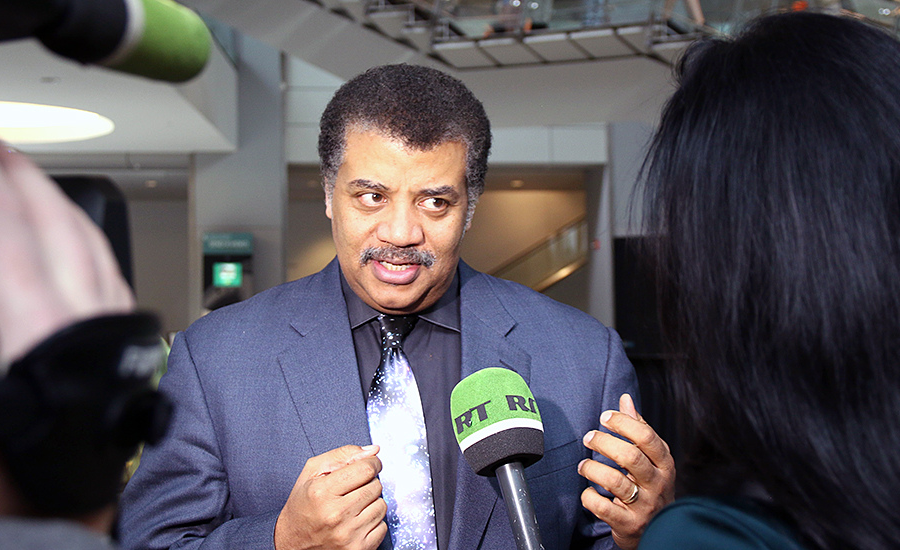
Travis Tyson’s academic and professional journey is uniquely his own, though it still reflects his dedication to learning and innovation. While growing up under the guidance of Neil deGrasse Tyson, Travis was encouraged to pursue a path driven by curiosity and intellect. During his school years, he excelled in subjects like mathematics and science, which paved the way for his future studies in engineering. His college education focused on how technology can solve real-world problems, particularly in areas that intersect with cutting-edge advancements in science. This foundation in engineering allowed Travis to explore the ways in which innovation can drive progress and improve lives.
In his professional career, Travis has carved out a name for himself within the tech industry, specializing in artificial intelligence. His expertise in AI has positioned him as a respected figure in the field, where he is known for his forward-thinking contributions that are helping to shape the future of technology. Working at the forefront of technological development, Travis continues to explore new ways AI can be harnessed to address complex global challenges, from enhancing human capabilities to improving systems in healthcare, education, and beyond. His achievements in tech reflect his deep commitment to pushing boundaries and contributing to meaningful advancements in society.
Beyond his professional pursuits, Travis Tyson is passionate about giving back to the community, particularly when it comes to inspiring the next generation of innovators. By sharing his knowledge and experience, Travis helps guide young minds toward careers in these fields, emphasizing the importance of curiosity, creativity, and critical thinking. His outreach efforts mirror his father Neil deGrasse Tyson’s commitment to fostering scientific literacy and encouraging future generations to explore the wonders of science and technology.
The Legacy Of Neil deGrasse Tyson
Neil deGrasse Tyson’s legacy extends far beyond his impressive career as an astrophysicist; he has become a cornerstone in the realm of science communication and education. Through his dedication to making science accessible, Tyson has successfully bridged the gap between complex scientific concepts and the general public. His ability to explain topics like astrophysics, space exploration, and the mysteries of the universe in relatable terms has earned him a unique place in popular culture. As a result, Tyson has inspired countless individuals to explore the wonders of science and to think critically about the world around them. His work continues to resonate with audiences across all ages, ensuring that the pursuit of knowledge remains a central part of human progress.
In addition to his groundbreaking contributions to the field of astrophysics, Neil deGrasse Tyson has used his platform to advocate for science literacy and to encourage the next generation of scientists. Through books, television shows, and public speaking engagements, Tyson has cultivated a deep connection with audiences, making him one of the most recognized faces in modern science. His television series, Cosmos: A Spacetime Odyssey, has further solidified his role as a leading science communicator, drawing millions of viewers and inspiring them to explore the universe’s mysteries.
As Neil deGrasse Tyson moves forward in his career, his impact will continue to shape the scientific landscape. His legacy is not just in his scientific discoveries, but also in his ability to ignite a passion for learning and exploration in others. Tyson’s influence is evident in the way he mentors aspiring scientists, advocates for space exploration, and elevates the role of science in society.
The Future Of Science And Technology
As Neil deGrasse Tyson continues to make a profound impact through his work in astrophysics and science communication, his son Travis Tyson is on his own path to making significant contributions to society. While Neil has become a globally recognized figure in space exploration and scientific literacy, Travis is carving out his own niche in the field of technology and artificial intelligence. The shared passion for learning and innovation that runs through their family is evident, with both father and son committed to shaping the future by educating and inspiring the next generation.
Travis Tyson, much like his father Neil, is driven by a desire to advance human knowledge and exploration. While Neil has focused much of his career on unraveling the mysteries of the universe, Travis is concentrating on the ways technology can be leveraged to address global challenges. His work in artificial intelligence is poised to drive significant change, particularly in the areas of healthcare, education, and environmental sustainability.
Looking ahead, Travis Tyson is determined to continue making an impact by pushing the boundaries of space exploration and technological innovation. He is particularly focused on developing technologies that can propel humanity into the future, both on Earth and beyond. In addition to his work in tech, Travis is also committed to contributing to scientific education, just as his father Neil has done for decades. He aspires to create platforms that promote science literacy, engage young learners, and encourage them to pursue careers in STEM fields.
Fun Facts About Neil deGrasse Tyson
- A Star in His Own Right: Tyson has a star named after him! In 2018, a star located in the constellation of Cygnus was officially renamed “Tyson Star” in recognition of his contributions to science communication.
- A Passion for Music: Despite being a world-renowned scientist, Tyson is an avid lover of jazz music. He has often mentioned his admiration for the genre and has even hosted events blending science and jazz.
Frequently Asked Questions (FAQs) About Neil deGrasse Tyson
Q: What is Neil deGrasse Tyson’s most famous work?
A: The show introduced complex scientific concepts to a broad audience and continued the legacy of Carl Sagan’s original Cosmos series.
Q: How did Neil deGrasse Tyson become interested in science?
A: Tyson’s fascination with space began at a young age when he visited the Hayden Planetarium in New York City. His deep curiosity about the cosmos continued to grow, leading him to pursue a career in astrophysics.
Q: What is Tyson’s impact on public science communication?
A: Tyson has played a pivotal role in bridging the gap between the scientific community and the general public. Through his books, television appearances, and public lectures, he has made science more accessible and engaging for people of all ages.
Q: What are some of Neil deGrasse Tyson’s contributions to astrophysics?
A: Tyson’s research in astrophysics has focused on the formation of stars, the dynamics of galaxies, and the study of dark matter. He has also been an outspoken advocate for space exploration and the importance of scientific literacy.
Conclusion
Neil deGrasse Tyson’s legacy extends far beyond his contributions to astrophysics. He has become a symbol of science communication, making complex topics not only understandable but also enjoyable for audiences worldwide. His efforts to inspire the next generation of scientists, educators, and thinkers will continue to resonate for years to come. Whether through his work as a scientist, educator, or media personality, Tyson has shown that science is for everyone. His message—that curiosity, wonder, and exploration are central to human progress—will live on, inspiring future generations to look up at the stars and wonder what lies beyond.
Stay in touch for more updates and alerts visit: Wales Buzz!





